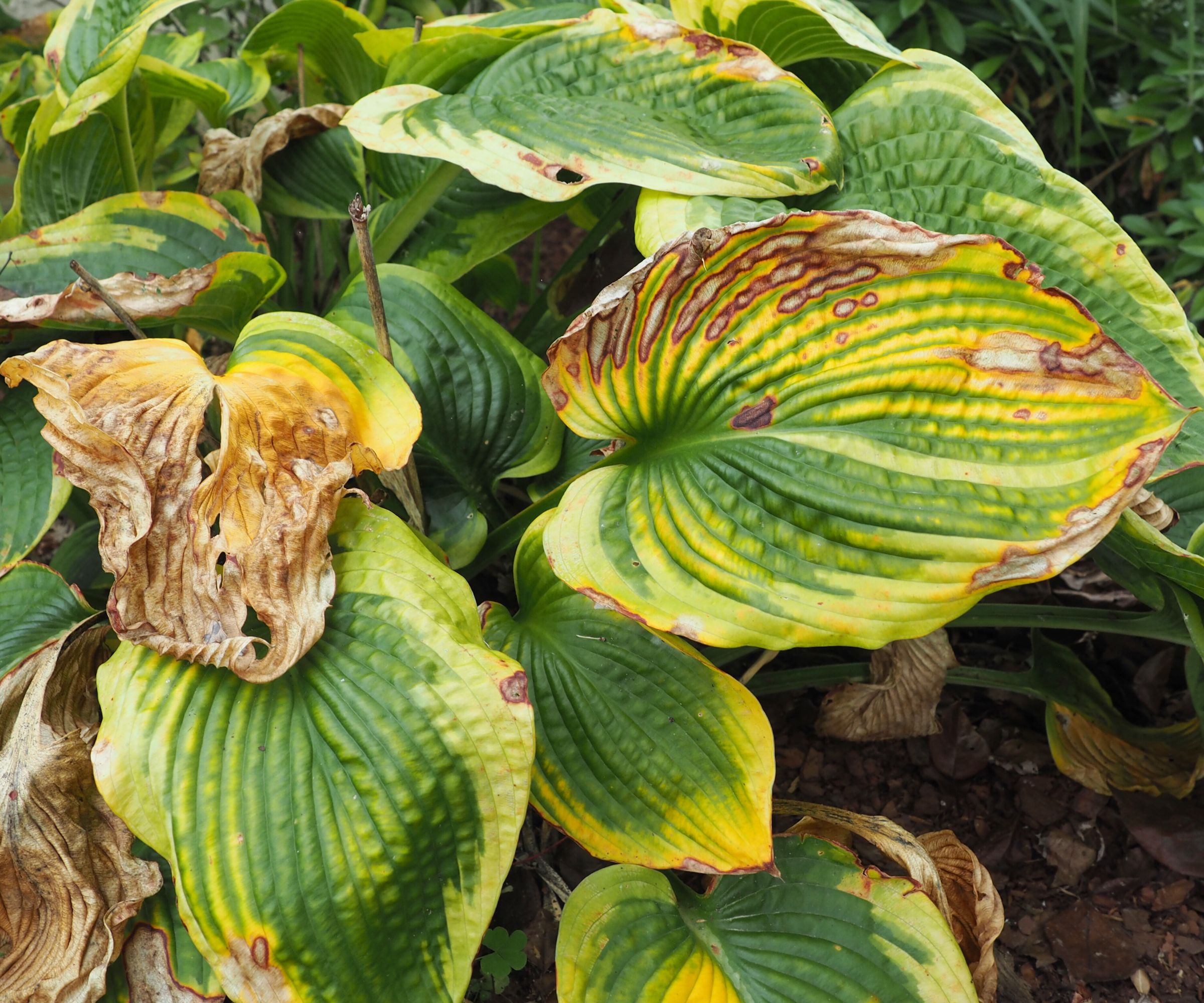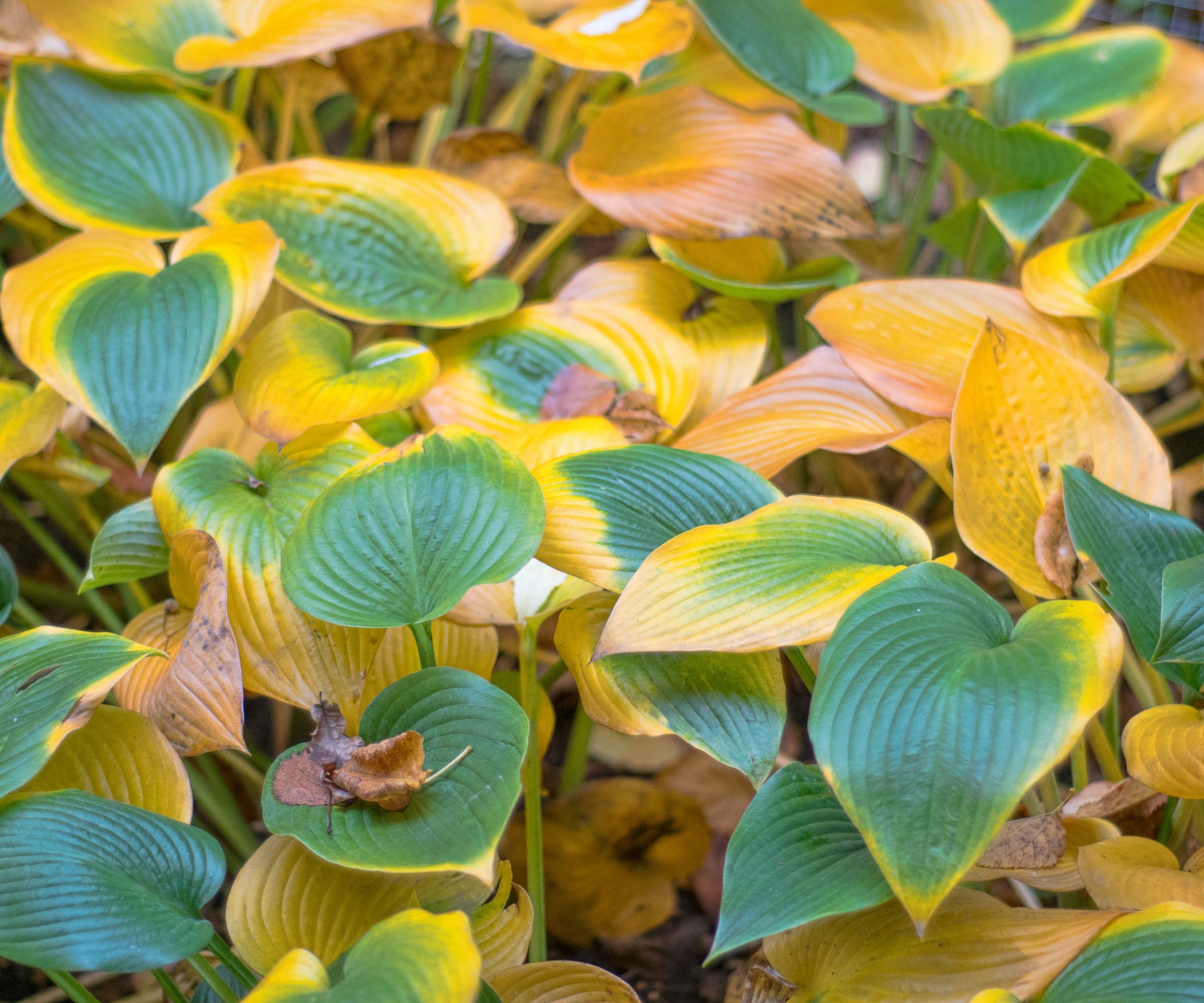Hosta Leaves Turning Yellow? Common Causes & How To Fix Them
Known for their gorgeous green foliage, when you see hosta leaves turning yellow you know something is wrong. Here are some common causes for yellow hostas and how to fix them.


One of the beautiful features of hostas are their rich green leaves. When you find your hosta plant leaves turning yellow, you know something is wrong. Yellowing leaves on hosta doesn’t necessarily mean disaster, but it is definitely time to investigate. The problem could be anything from too much sun to incurable diseases. If you want to find out why hosta leaves turn yellow, read on.
Reasons for Yellow Hosta Leaves
Hosta leaves turn yellow for a wide variety of reasons, and it is important for you to figure out the particular reason that applies to your plant.
Hosta Leaves Turning Yellow from Scorch
Perhaps the easiest situation to remedy is when yellow hosta leaves indicate too much sun. Hosta are plants that grow best in partial shade or even full shade. In fact, they are regular fixtures in the shade garden. If you grow them in full sun, you can expect yellow hosta leaves. The foliage turns yellow and scorches at the margins.

When you see hosta plant leaves turning yellow because of too much sun, it is termed hosta scorch. Hosta scorch is even more pronounced if the plant is also grown in poor soil. The plant prefers soil rich in organic matter that will hold water. During a drought, or when dried out in full sun, the hosta leaves become pale and the margins scorch. You can give the plant temporary relief by watering well early in the day, but the better and more permanent solution is to transplant the hosta to a shaded site in high organic matter soil.
Yellowing Leaves on Hosta Indicating Disease
When yellow hosta leaves indicate disease, the options for treating the problem are more difficult. When you see yellowing leaves on hosta, the plant may have petiole rot, caused by the fungus Sclerotium rolfsii var. delphinii. The earliest symptoms are yellowing and browning of the lower leaf margins. If you see brown, mushy decay and white fungal threads or fungal fruiting structures about the size of mustard seeds at the base of the petiole, your plant probably has this disease. You cannot save plants infected with petiole rot. Prevent the problem by inspecting young plants carefully before you plant them. You should also remove and destroy all infected plants and remove and replace the soil to 8 inches (20 cm.).
Other fungal diseases, rots, and virus diseases that cause yellowing leaves on hosta are equally impossible to cure. For fusarium root and crown rot, bacterial soft rot, hosta virus X and other viruses, all you can do is remove the plants and destroy them, trying not to spread the disease to other plants. Since fungal diseases live in the soil and attack hosta at or below the surface of the soil, you may need to kill the fungus by solarizing the soil with black plastic. Be sure to keep your garden tools clean, keep the area free of debris, and avoid transplanting diseased plants. Other fungal diseases, such as root and stem rot, are generally caused by excessive moisture and are usually deadly. Be careful not to overwater and don’t limit air circulation by crowding the plants. Water your hosta at the soil level to keep the leaves dry.
Pests Causing Yellow Hosta Leaves
Foliar nematodes are microscopic worms that live inside the leaves. Symptoms, which are usually first noticed in early summer, begin as a yellow discoloration that later turn into brown streaks between the leaf veins. Keep an eye on the plant and remove affected leaves immediately to prevent the pests from spreading.
Gardening tips, videos, info and more delivered right to your inbox!
Sign up for the Gardening Know How newsletter today and receive a free copy of our e-book "How to Grow Delicious Tomatoes".
Hosta Leaves Turning Yellow Naturally

Once the growing season dies down, hostas will naturally begin to enter dormancy. When this happens, you may notice yellowing hosta leaves. This is perfectly normal and nothing to worry about. Once the leaves have completely died back in fall, you can cut the plant back.

Teo Spengler is a master gardener and a docent at the San Francisco Botanical Garden, where she hosts public tours. She has studied horticulture and written about nature, trees, plants, and gardening for more than two decades. Her extended family includes some 30 houseplants and hundreds of outdoor plants, including 250 trees, which are her main passion. Spengler currently splits her life between San Francisco and the French Basque Country, though she was raised in Alaska, giving her experience of gardening in a range of climates.
-
 Moody Blooms For Spring: 8 Types Of Black Flowers To Add Drama To Spring Displays
Moody Blooms For Spring: 8 Types Of Black Flowers To Add Drama To Spring DisplaysFrom midnight burgundies to inky violets, several types of black flowers can enrich and embolden a spring display. Try these brooding bloomers for a moody garden
By Tonya Barnett
-
 Can Snake Plants Live Outside? Everything You Need To Know For Snake Plants Al Fresco
Can Snake Plants Live Outside? Everything You Need To Know For Snake Plants Al FrescoSnake plants can live outside given the right conditions, but be careful that they don't take over! Learn the best way to use snake plants in your landscape.
By Mary Ellen Ellis